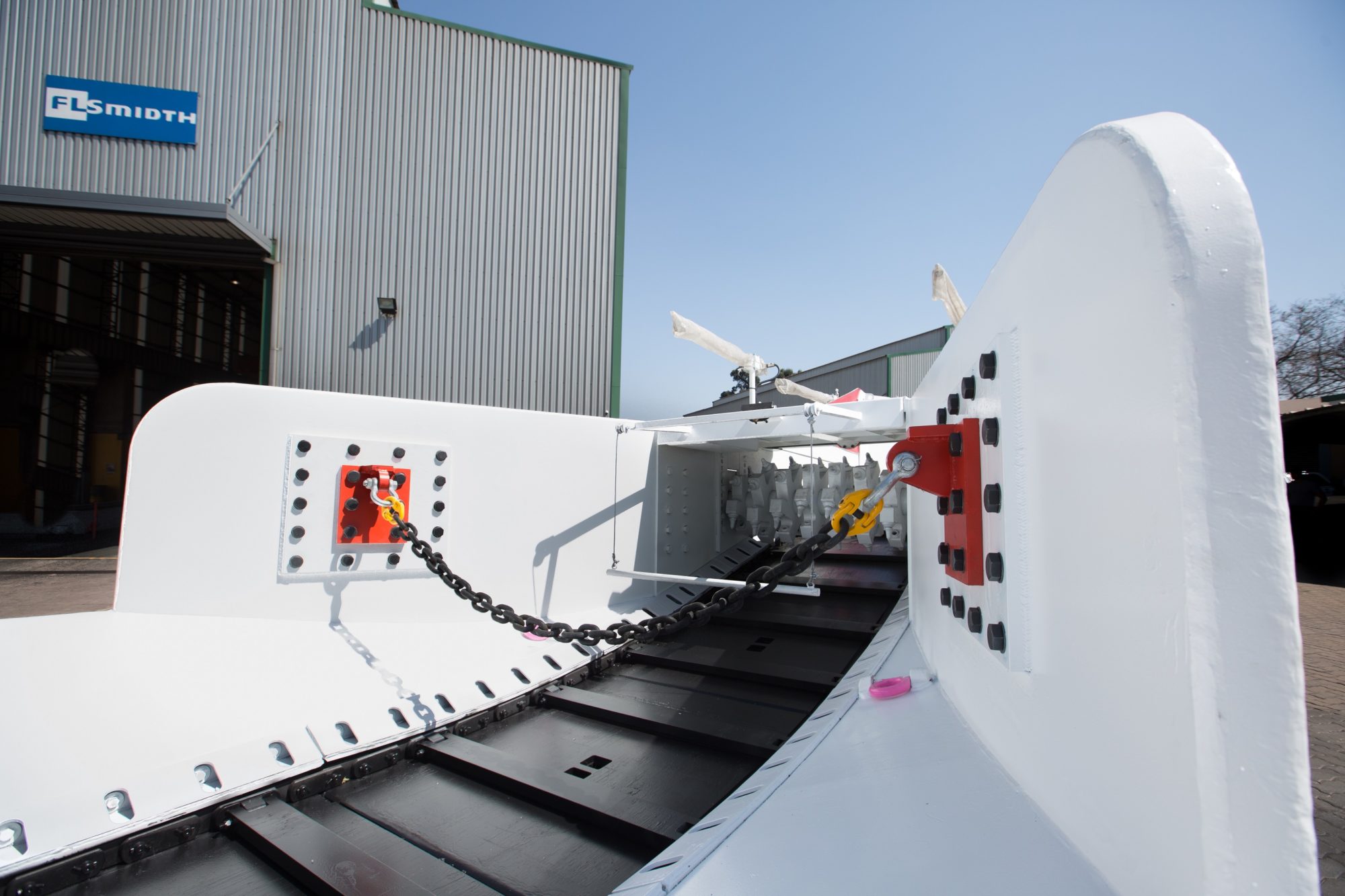With coal miners moving into more difficult geological conditions, a detailed characterisation of the ore body is increasingly vital when specifying feeder breakers or mineral sizers, according to PC Kruger, Capital Sales Manager at FLSmidth Buffalo. “Most of the ‘easy’ coal seams in the Witbank coalfields have been mined,” says Kruger, “and what remains tends to include a high level of hard rock intrusion as well as tramp material such as steel, wood and concrete.”
In particular, a strip mining of old underground bord-and-pillar mine often encounters a substantial portion of rock, which has a much higher ultimate compressive strength (UCS) than the coal. While the UCS of coal ranges from about 40 MPa to about 60 MPa tests in the Witbank region, over a number of decades, have found that some rock intrusions easily measure up to 210 MPa in strength.
He says that feeder breakers are well suited for most underground mining conditions where the coal is relatively soft and homogenous. “However, they are not designed to deal with high strength material,” he says. “Where there are regular hard rock intrusions, you will generally opt for mineral sizers.”
Another critical consideration in specifying equipment for coal processing is the principle of reduction ratios in each stage of sizing. Kruger says the ‘the rules of the game’ require that, in the primary sizing stage, the ratio between the input size of coal and the output size should be about 4:1 or 5:1.
“In other words, a large chunk of material with dimensions of 1,200 mm in two or three dimension can realistically only be reduced to about 300 mm in size in the primary phase,” he says.
Similarly, in the secondary sizing stage, the ratio should be 3:1, which can reduce this 300 mm coal down to 100 mm. In the tertiary sizing stage, a ratio of 2:1 is the norm, breaking the material down further to the minus 50 mm size that the end-user usually requires.
“Trying to operate outside the boundaries of these reduction ratios invariably leads to increased wear and running costs,” he says. “Putting over-sized material – say, larger than 150 mm material – into a tertiary sizer designed for 100 mm material, prevents the positive ‘bite’ that breaks the product down. Instead, the size and geometry of the pieces means that they do not pass cleanly through the rotors, and cause undue wear on the rotor teeth and other components.”
He emphasises that trying to reduce capital expenditure by having fewer sizing stages – and therefore less equipment – is usually false economy. With the capital cost of this equipment making up only 8% to 10% of its total cost of ownership over its lifespan, the operating cost normally outweighs any upfront saving by orders of magnitude.











